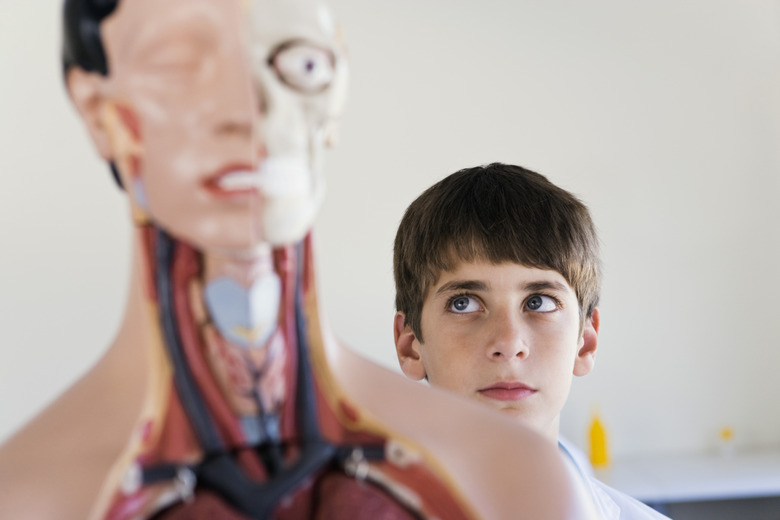The Type Of Tissue That Supports And Binds The Body's Structures
Without connective tissues, organs would lack protection, skin would wrinkle, and you wouldn't have any bones in your body. Hartnell College calls connective tissues the most abundant and diverse types of tissues in the body. In addition to binding and supporting the body, this type of tissue stores fat, protects softer tissues, and has a non-cellular matrix with different consistencies.
Loose and Dense Connective Tissues
Loose and Dense Connective Tissues
Areolar tissue, a type of loose connective tissue, binds organs together. You can find this type of connective tissue beneath the skin and between muscles, according to Midlands Technical College. Adipose tissues, which are loose connective tissues, store fat that the body can use as energy and insulation. Dense connective tissues make up the ligaments and tendons in the body with tightly packed collagen fibers that run in the same direction, as you may see in the grain in a cut of steak. Dense connective tissues that are irregular also contain collagen, but don't run in the same direction. These types of tissue — which you can find around some organs, in the middle layer of skin and around joint capsules — keep your organs from over-stretching and give your body structural strength.
Hyaline and Elastic Cartilage and Fibrocartilage
Hyaline and Elastic Cartilage and Fibrocartilage
Cartilage is a type of solid tissue that doesn't have a blood supply or nerve fibers. According to Midlands Technical College, hyaline cartilage is the most common type of cartilage in the body. Its function is to reduce friction between joints and support structures of the body. You can find this type of cartilage at the ends of long bones, between ribs, in the trachea, and at the tip of the nose. Elastic cartilage is similar to hyaline cartilage, but is more flexible. The epiglottis and ear have elastic cartilage. Fibrocartilage acts as a cushion and shock absorber, helps prevent joint dislocations and sometimes forms a joint between bones. You can find this type of cartilage in the knees, hips and between the discs of the spine.
Osseous Tissues
Osseous Tissues
Bone, or osseous tissue, is a type of mineralized connective tissue that contains live cells and minerals like calcium and salt, according to Hartnell College. Bones store calcium and minerals, aid in muscle movement and protect organs. Osteons in bones form concentric circles that allow the passage of blood vessels as blood cells form within bone marrow.
Blood
Blood
Blood is a type of liquid connective tissue that has a matrix that isn't solid because of the lack of fibrous elements in its make-up, according to Georgia Highlands College. Hartnell College share that blood's matrix is plasma. Platelets, red blood cells and white blood cells make up part of the connective tissue. Blood's function is to help fight infections, deliver oxygen and nutrients to cells within the body, help the body heal, and remove waste.
Cite This Article
MLA
Richards-Gustafson, Flora. "The Type Of Tissue That Supports And Binds The Body's Structures" sciencing.com, https://www.sciencing.com/type-tissue-supports-binds-bodys-structures-14955/. 24 April 2017.
APA
Richards-Gustafson, Flora. (2017, April 24). The Type Of Tissue That Supports And Binds The Body's Structures. sciencing.com. Retrieved from https://www.sciencing.com/type-tissue-supports-binds-bodys-structures-14955/
Chicago
Richards-Gustafson, Flora. The Type Of Tissue That Supports And Binds The Body's Structures last modified March 24, 2022. https://www.sciencing.com/type-tissue-supports-binds-bodys-structures-14955/
